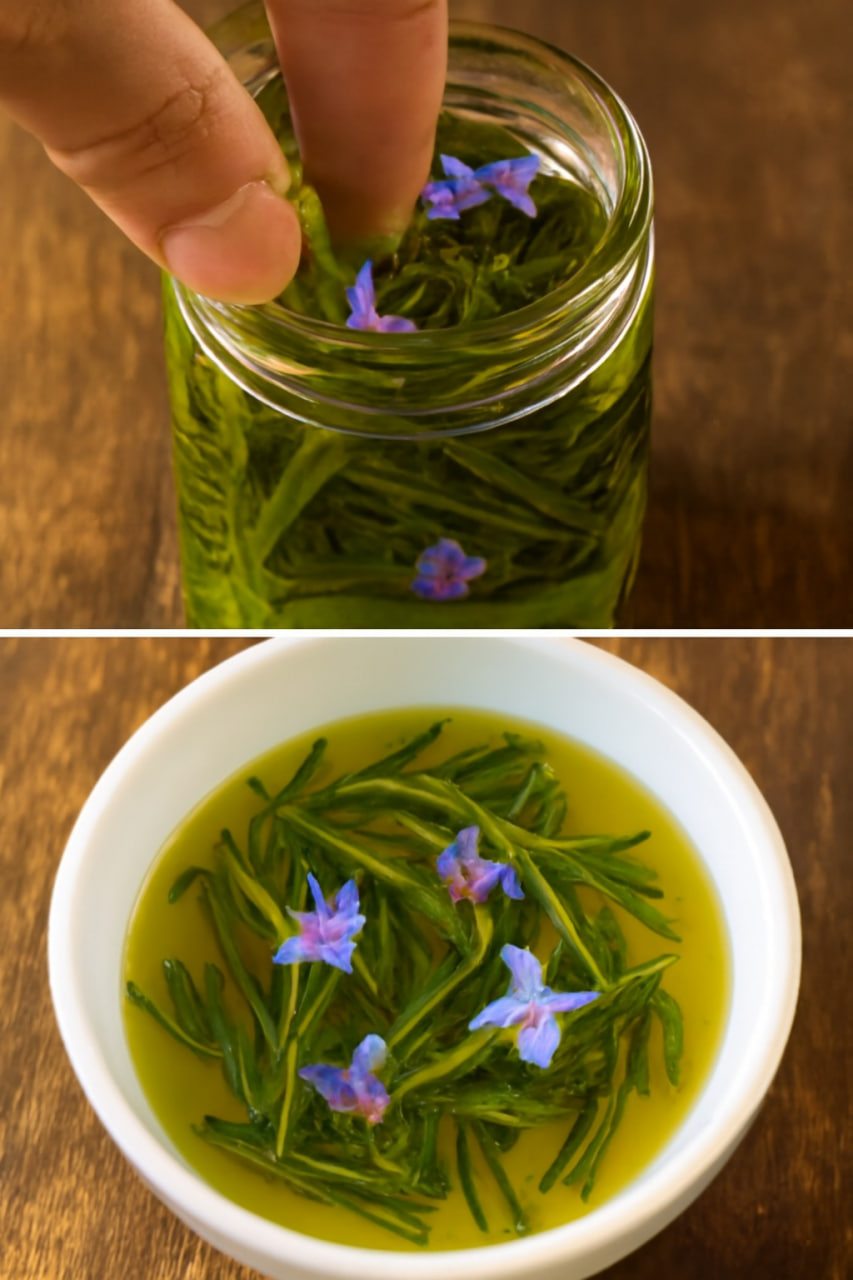Step-by-step Preparation
1. Prepare the rosemary
You can use fresh rosemary, or dry it to extend the shelf life of the oil:
-
To dry the sprigs: tie them together with string and hang them upside down in a dry, shaded place for about a week.
-
Alternatively, you can dry them in the oven at 50°C (120°F) for one hour, leaving the door slightly open.
2. Add ingredients to the jar
Remove the rosemary leaves from the sprigs (you can chop them lightly if you prefer).
Place the leaves into the glass jar and pour in the oil until the rosemary is completely covered.
Use about 1/3 rosemary to 2/3 oil as a ratio.
3. Cover with gauze and string
Cover the mouth of the jar with gauze and secure it with string.
This allows the mixture to “breathe” during the cooking process, preventing pressure build-up or unwanted fermentation.
4. Cook in a water bath (bain-marie)
Take a large pot, fill it with water, and place a dish towel at the bottom (this prevents the jar from knocking against the sides).
Place the jar in the pot without a lid, but still covered with gauze.
Heat over very low heat for about 3 hours.
⚠️ Important: The oil should never boil.
By the end of cooking, the oil will have a dark green color, a sign that the rosemary has released all its properties.
5. Strain and store
Strain the oil using a piece of gauze or a fine mesh strainer.
Pour the finished rosemary oil into a dark glass bottle (or any tightly sealed container) and store it in a cool, dark place.
How to Use Rosemary Oil
-
For draining or anti-cellulite massages
-
As hair masks for oily or dandruff-prone hair
-
For toning treatments for legs and feet
-
As an energizing body oil after a shower
If stored properly, the rosemary oil will last for several months.
You can also personalize it by adding a few drops of rosemary essential oil to enhance the effect.
Extra tip:
You can also use extra virgin olive oil for a richer, more nourishing result, or jojoba oil for a lighter texture.
ADVERTISEMENT

